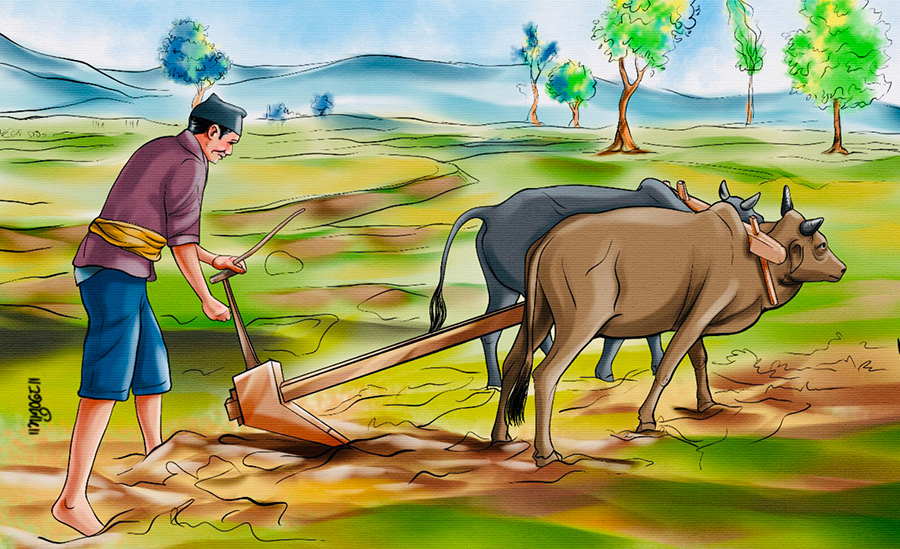
Participation is the process or state of taking part in or being involved in an activity with others. It refers to the opportunity or right of a party or individual to collaborate with others, hence the term “people’s participation” or “public participation” when referring to the people’s right to partake in an activity.
In simple terms, participation involves engaging in someone else’s work or, according to communal commitment, completing tasks at local or national levels by establishing social, economic, political, and cultural values. The term “public participation” denotes the involvement of the public in the development of society and the nation.
Development programs that utilise participatory methods tend to be both outcome-oriented and sustainable. The concept of public participation has evolved from the belief that the involvement of ordinary people in efforts aimed at achieving social, economic, political, and cultural development is essential.
In Nepal, though studies and analyses of works completed through public participation have begun, historical facts regarding public participation are not well-documented. However, observations of historical accounts and physical evidence suggest that public participation in Nepal is not newer than in European history.
The concept of public participation in development began to gain attention in the 1960s. French political theorist and philosopher Alexis de Tocqueville discussed ideas related to public participation during this period. Similarly, in the 1970s, the United Nations Development Programme recognised that work without public participation was ineffective. Nowadays, various frameworks and methods to engage public participation are being developed according to specific circumstances.
Public participation in Nepal
The history of public participation in Nepal is a source of pride. For many years, public participation has been prioritised in village development. Ancient structures such as temples, inns, wells, ponds, and trails were constructed through communal labour and public participation.
During the Malla period, King Jayaprakash Malla organised the construction of a gunpowder warehouse through communal labour. Similarly, in the time of King Prithvi Narayan Shah, development works were completed without monetary cost through communal labour.
Notably, after the 1990s, the concept of participatory rural development began to take shape in developing countries to gradually improve people’s living standards. Following the fall of the Rana regime, Nepal embarked on planned development, focusing on village and district development. The Tribhuvan Village Development Program is considered a milestone in rural development.
The Community Development Program initiated in 1953 laid the foundation for social awareness and collective efforts. The 1962 Constitution emphasised strengthening local governance, leading to the adoption of the decentralisation principle in 1963. In subsequent decades, programs such as integrated rural development and basic needs fulfilment were introduced to make the people the owners of the development process.
The Local Self-Governance Act of 1999 included provisions to ensure public participation in governance and development, making it a policy imperative. After the 2015 Constitution, Nepal was divided into seven provinces, and local, provincial, and federal governments began prioritising public participation in planning and budgeting processes.
Public participation in agriculture
The history of public participation in our country is noteworthy. Development activities such as constructing irrigation channels, canals, roads, and local markets have been passed down through generations as a social custom. Traditional agricultural practices like cooperative labour, festivals related to agriculture, and various agricultural fairs are ancient forms of public participation.
Such examples in our society highlight the longstanding tradition of public involvement in agriculture. In the modern era, the need for and importance of public participation have increased significantly. The growing demand for agricultural production requires the development of infrastructure such as roads, irrigation, technology, markets, and financial management, all of which necessitate increased public participation. Additionally, the format of participation has evolved and progressed.
Agriculture is the backbone of Nepal’s economic development. Previously viewed as a subsistence occupation, the perception of agriculture has shifted in recent times. According to the fiscal year 2020/21 statistics, the agricultural sector contributes about 24 per cent to the country’s total gross domestic product.
Due to globalisation, open market systems, and increasing internal demand, enhancing both the quality and quantity of agricultural production is imperative. Furthermore, managing the fair pricing and marketing of produced goods is another challenge. While there appear to be numerous opportunities, there are also problems and challenges.
To increase productivity, diversification, and competitive capacity, it is necessary to create a conducive economic and policy environment, adopt modern technology, build irrigation and post-harvest infrastructure, and improve legal frameworks for investment and commercial activities.
In the context of a less developed nation like Nepal, policy frameworks for agricultural development have been established, but the desired realistic outcomes have not been achieved. Achieving agricultural development goals is not possible without a participatory approach, as farmers play a crucial role at every step. In Nepal, it is unimaginable to think about irrigation, rural roads, agricultural wholesale market centres, and technology management without farmer participation.
The government has introduced and implemented several programs to increase farmer participation. These include providing concessional agricultural loans, crop insurance, and tax incentives for agricultural industries and trade. Since the livelihoods of most Nepali people and the national economy depend on agriculture, it is essential to apply new and scientific participatory approaches to ensure continuous agricultural development and management.
Conclusion
In summary, the basic resources and means necessary for achieving sustainable and outcome-oriented development are rooted in public participation. Public participation is the foundation and essential resource for all development activities. To achieve the desired development, it is crucial to ensure economic, social, cultural, environmental, and technological sustainability, along with everyone’s contribution and participation.
Raising awareness and fostering a sense of responsibility among people is key to making these efforts successful and enduring. Regardless of the challenges and obstacles, the habit of production and development activities can be embraced within society.
Therefore, considering the needs and desires of the people, it is essential to increase public participation in all areas of societal development. A lack of public participation can lead to distrust and suspicion between the rulers and the ruled, becoming an obstacle to a nation’s development.
In the context of agriculture, professional commercialisation, modernisation, and marketisation require farmer participation as an integral part. Farmers should be made partners. It is necessary to further promote ancient social cooperation and participation, transforming agriculture to support economic improvement and societal development.


















